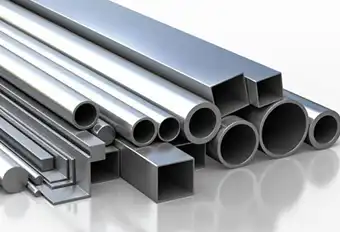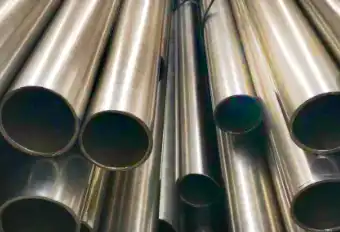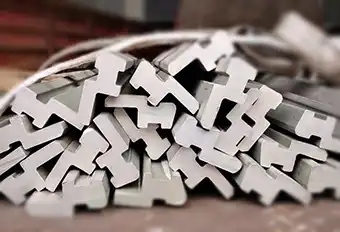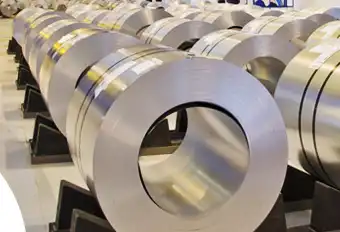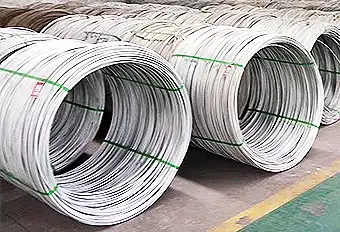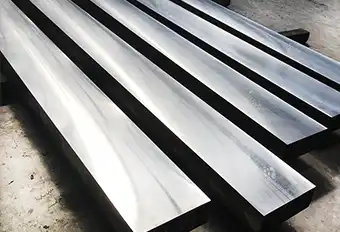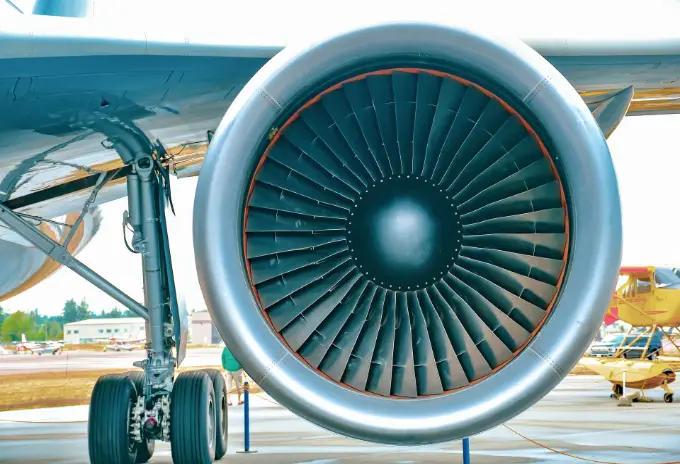The American Iron and Steel Institute has established a designation system for structural shapes, which has been adopted by steel producers. A summary of the AISI designations is shown below.
"W" SHAPES are doubly-symmetric wide flange shapes used as beams or columns whose inside flange surfaces are substantially parallel. A shape having essentially the same nominal weight and dimensions as a "W" shape, but whose inside flange surfaces are not parallel, may also be considered a "W" shape, provided its average flange thickness is essentially the same shape as the flange thickness of the "W" shape.
"S" SHAPES are doubly-symmetric shapes produced in accordance with dimensional standards adopted in 1896 by the Association of American Steel Manufacturers for American Standard beam shapes. The essential part of these standards is that the inside flange surfaces of American Standard beam shapes have approximately a 16 2/3% slope.
"M" SHAPES are doubly-symmetric shapes that cannot be classified as "W", "S", or bearing pile shapes. Although not included in the standard nomenclature tabulation, bearing piles are doubly-symmetric wide flange shapes whose inside flange surfaces are essentially parallel and whose flange and web have essentially the same thickness.
"C" SHAPES are channels produced in accordance with dimensional Standards adopted in 1896 by the Association of American Steel Manufacturers for American Standard channels. The essential part of these standards is that the inside flange surfaces of American Standard channels have approximately a 16 2/3% slope.
"MC" SHAPES are channels that cannot be classified as "C"shapes.
DESIGNATION OF CARBON STEELS AISI/SAE
DEFINITION. Steel is considered to be carbon steel when no minimum content is specified or required for aluminum, chromium, cobalt, columbium, molybdenum, nickel, titanium, tungsten, vanadium, or zirconium, or any other element added to obtain a desired alloying effect; when the specified minimum for copper does not exceed 0.40%; or when the maximum content specified for any of the following elements does not exceed the percentages noted: manganese 1.65, silicon 0.60, copper 0.60.
NUMBERING SYSTEM. A four-numeral series is used to designate graduations of chemical composition of carbon steel. The first two digits( Table 1.) indicate the grade of carbon steel. The last two numbers are intended to indicate the approximate middle of the carbon range. For example, in the grade designation 1035 represents a carbon range of 0.32% - 0.38%.
It is necessary, however, to deviate from this system and to interpolate numbers in the case of some carbon ranges and for variations in manganese, phosphorus or sulfur within the same carbon range.
Within the numerical designation system the special-purpose elements lead and boron are commonly designated by inserting the letter "L" or "B" respectively between the second and third numerals of the AISI number, e.g., 10L45 and 10B46.
The prefix "M" indicates "merchant quality". The "M" grades are produced to wider carbon and manganese ranges than the corresponding standard grades which are not so prefixed.
| Table 1. Designation of carbon steels |
| Grade |
Description |
| 10XX |
Non-resulfurized Carbon Steels, Manganese 1.00% maximum |
| 11XX |
Resulfurized Carbon Steels |
| 12XX |
Rephosphorized and Resulfurized Carbon Steels |
| 15XX |
Non-resulfurized Carbon Steels, Manganese max. over 1.00% |
*First two digits indicate grade of carbon steel.
**Last two digits represent middle of carbon range.


